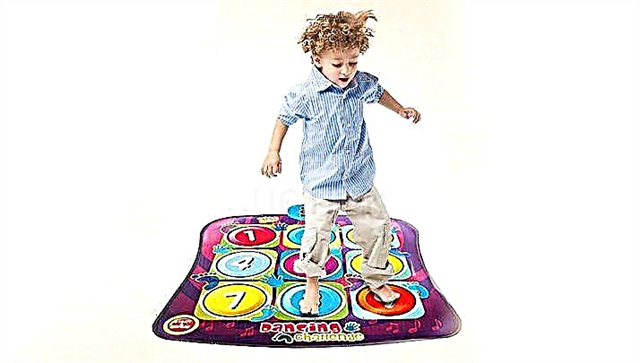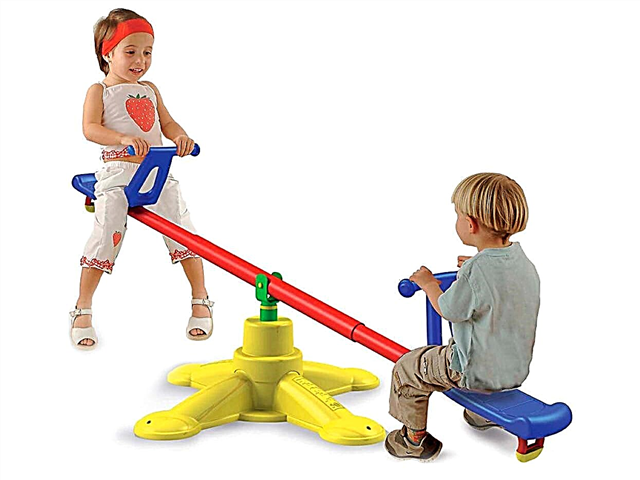
In the treatment of rhinitis in adult patients, xylometazoline preparations are especially in demand, to which Snoop belongs. Such a drug quickly acts and permanently removes the uncomfortable symptoms of the common cold. But is it allowed in childhood, how often can it be used in babies and what similar medications can it be replaced with?

Release form
Snoop is produced by Stada in only one form - a nasal spray. The medicine is a white polyethylene bottle equipped with a special spray system. One bottle contains 15 ml of clear liquid without any color, which corresponds to 150 doses of the drug.
Composition
The main component of Snoop, thanks to which the spray has a therapeutic effect, is called xylometazoline. It is contained in the preparation in the form of hydrochloride in two dosages, so the solution has different concentrations:
- in a 0.05% spray, 500 μg of xylometazoline accounts for 1 milliliter of the drug;
- 0.1% preparation in each milliliter contains xylometazoline in an amount of 1 mg.

As an auxiliary component in 1 ml of any of the sprays, 250 mg of sea water is present. In addition, the composition of the medication includes purified water and potassium dihydrogen phosphate.
A medicine with a lower concentration is often called a baby Snoop, because it is used in childhood. Medications can be distinguished primarily by their packaging - a box with a 0.05% solution is blue, and the numbers “0.05%” on both the box and the bottle are highlighted in blue. A more concentrated medication is sold in boxes with a red label. The numbers "0.01%" both on the bottle and on the outer packaging are also highlighted in red.

Mechanism of action
Snoop belongs to a group of medicines called anti-congestants or decongestants. These medicines have a vasoconstrictor and anti-edema effect due to the effect on alpha-adrenergic receptors, which are located in the nasal mucosa. By stimulating these receptors, anti-congestants cause contraction of the lumen of the blood vessels.
Xylometazoline in the composition of the spray has just such an effect, as a result of which the vessels in the nasopharynx narrow. This helps to eliminate swelling of the mucous membrane or to stop bleeding (if it started from the small vessels of the nose), and also makes it easier to perform rhinoscopy and reduces the amount of nasal discharge. The use of Snoop also has anti-inflammatory effects and facilitates the process of breathing through the nose.because it helps to get rid of congestion and returns normal patency to the nasal passages.
It is important to note that the spray acts primarily locally. Its active ingredient can be absorbed only in extremely small quantities - such that modern techniques cannot determine it in the bloodstream.


The effect of using Snoop can be noted just a few minutes after the solution enters the nasal passages. Its duration is up to 8-10 hours, which in most cases allows you to limit yourself to one or two use of the spray.
The presence of sea water in the solution contributes to the normalization of the function of the epithelium of the nasopharynx and has a positive effect on the production of secretion by the goblet cells. This provides support for the physiological state of the inner surface of the nasal passages in normal conditions.
Indications
In pediatrics, Snoop is most often used for acute respiratory diseases that manifest as a runny nose. In addition, the spray can be prescribed:
- children with acute rhinitis of an allergic nature;
- small patients with sinusitis;
- children who have been diagnosed with hay fever;
- a child with inflammation of the Eustachian tube;
- to reduce edema of the mucous membrane in children with otitis media (as an addition to the main treatment of such a disease);
- to perform any diagnostic procedures in the nasal area, for example, for rhinoscopy.


From what age is it used in children?
The medication is contraindicated for babies in the first two years of life. Children 2 years old can only be prescribed Snoop with a concentration of 0.05%. A more concentrated solution is used no earlier than six years. It is also important to note that the use of Snoop in childhood is recommended only as directed by a doctor and only during the period prescribed by the doctor.
Failure to comply with such conditions can worsen the condition of a small patient or provoke negative side effects of the spray.

Contraindications
Snoop's treatment is prohibited:
- with chronic rhinitis, in which the mucous membrane is atrophied;
- with a rapid heart rate (tachycardia);
- with glaucoma;
- with an increase in blood pressure;
- with hyperfunction of the thyroid gland;
- with intolerance to xylometazoline or other ingredients of the spray;
- if the child has once had operations on the lining of the brain.
If a small patient has diabetes mellitus, the use of the drug requires special care.
For adults, Snoop is not prescribed when carrying a child, and while breastfeeding, the use of a medication, although it is allowed, should only be under medical supervision.

Side effects
The drug can cause severe dryness or irritation of the mucous membrane, as well as provoke sneezing, increased mucus production or burning. Such negative symptoms often appear with excessive use of Snoop or the use of a spray for longer than the period prescribed by the doctor. In rare cases, after the injection of the medication, the nasopharyngeal mucosa swells, then an immediate doctor's consultation is required to examine the child.
Snoop can also affect the nervous system of small patients if the dosage of the drug is high, and the frequency of injections is more than the doctor prescribed or recommended in the annotation. In these cases, the child may complain of headaches and visual disturbances. In addition, the drug can cause insomnia or depression.


In rare cases, during Snoop's treatment, a negative reaction to such a spray was recorded from the digestive tract (some patients experienced vomiting) or the cardiovascular system (complaints of palpitations were encountered, and the examination showed tachycardia, increased blood pressure or arrhythmia).
Instructions for use
Before each injection of the medication, the nasal passages must be cleared of excess secretions. To do this, it is recommended to use turundas made of cotton wool or a special aspirator. If the spray has not been used before (the bottle is sealed), then after opening its package, you should make several presses on the rim of the spray, so that a "fog" of spray particles appears. After that, the medication will be ready for use.
When using Snoop, the bottle is held vertically with a spray device upward (do not point it down or horizontally). After removing the protective cap and inserting the tip of the bottle into one nostril, press the nebulizer and inject one dose of the drug into the nasal passage. Then the process is repeated for the second nostril and the child is invited to inhale through his nose.
A single dose of Snoop for a patient of any age is one injection.
In treating a child, it is important to use a solution concentration suitable for age:
- if the baby is 2 years old, but not yet six years old, he is prescribed a 0.05% spray;
- for the treatment of children over 6 years old, a 0.1% drug is used.
The frequency of injections of the drug is determined by the condition of the child. Often it is enough to take the medication 1 or 2 times a day. The maximum permissible frequency of Snoop's use is considered 3 times a day. More frequent use of the spray is prohibited.
The duration of Snoop's treatment should be short, due to the gradual habituation to its active ingredient. Doctors try to prescribe it to children in the shortest possible course. This medicine is not used for more than 5-7 days.

One bottle should be used for one child. If the family has two or more children and the spray is prescribed to several patients, it is worth purchasing a separate medicine for each patient.
Overdose
If the dose is accidentally exceeded (for example, if a child of 4 or 5 years old is injected with 0.1% Snoop), a burning sensation in the nose, frequent sneezing, complaints of vision problems, an increase in nasal discharge, headaches, vomiting and others may occur negative reactions. In such a situation, the patient must be examined by a doctor., and to eliminate negative symptoms, symptomatic remedies prescribed by a doctor are used.
Compatibility with taking other medications
Like other vasoconstrictor drugs that affect alpha-adrenergic receptors, Snoop cannot be combined with certain groups of antidepressants - drugs that inhibit monoamine oxidase and tricyclic drugs. Snoop is compatible with other medicines that are prescribed for the treatment of rhinitis, sinusitis or otitis media (antibacterial drugs, antipyretics, etc.).

Terms of sale
Snoop, like many of its analogues, is sold without a prescription, so buying a spray does not cause any difficulties.
However, before purchasing this medicine for a child, specialist advice is advisable.
The average price of one bottle of baby Snoop (0.05% solution) is 130-140 rubles, and for 0.1% medication you need to pay about 120 rubles.
Storage features
An unopened bottle of Snoop is good for 5 years from the date of manufacture. You need to keep the medication in a place where the temperature will not be higher than +25 degrees and a small child will not find the drug. Since the solution placed inside the vial is sterile, and its composition does not include preservatives, then after the first use, the shelf life is reduced to 3 months. If more time has passed since the opening, but the solution still remains inside, it should be discarded.


Reviews
Parents generally respond well to the use of Snoop in children. According to them, this medicine is easy to use, it quickly relieves swelling and improves nasal breathing. Due to the form of the spray, the medication is evenly sprayed into the nose, which makes it more preferable than analogs in drops. The advantages of Snoop also include its economical consumption, the presence of sea water in the composition and convenient packaging.
As for the disadvantages, many mothers do not like the gradual addiction to the medication, which is why it is used for only a few days. There are also reviews that mention the weak action of the medication with a runny nose or the occurrence of side effects.

The cost of the spray is usually called acceptable, but some parents consider it too high, since there are many analogues that are cheaper.
Doctors speak about Snoop mostly positively and are often prescribed to children with acute respiratory infections. At the same time, doctors, including the famous pediatrician Komarovsky, focus the attention of mothers on the fact that such a spray, like other vasoconstrictor drops, should be used in children only on strict indications... These primarily include the lack of breathing through the nose and severe pain in the ear, as well as sinusitis.

Analogs
If it is impossible to use Snoop for one reason or another, the doctor may prescribe another remedy, the action of which is also provided by xylometazoline. The range of such drugs is quite extensive and includes the following drugs:
- Galazolin;
- Xymelin;
- Otrivin;
- Evkazolin Aqua;
- Rhinomaris;
- Xylometazoline;
- Xymelin Eco;
- Rinostop;
- Rinonorm;

- Dr. Theiss Rinotaiss;
- Xilen;
- Tizin Xylo;
- For the nose;
- Olint;
- Rhinorus;
- Asterisk NOZ;
- Sanorin-Xylo;
- Suprima-Noz.
Most of these medicines come in the form of nasal drops or metered-dose sprays. Agents such as Galazolin and Rinorus are also represented by nasal gel. All of these drugs have a dosage of 0.05% or 0.1% and are used in the same situations as Snoop. Contraindications, age restrictions and possible side effects of such medications also coincide.


In addition to drugs based on xylometazoline, a child with rhinitis can be prescribed vasoconstrictor drugs with a different composition.
- Nazol Baby. The effectiveness of these nasal drops is provided by a substance called phenylephrine. It is contained in a concentration of 0.125%, which allows the drug to be used in the treatment of children of any age. There is also a more concentrated formulation called Nazol Kids. These drops contain 0.25% phenylephrine, so they are prescribed no earlier than 4 years of age.
- Nazivin. This medicine contains oxymetazoline and is available in drops (there are several options for the concentration of the solution) and in the form of a spray. Nazivin, containing 0.01% of the active ingredient, is allowed to be used even in infants. A more concentrated solution (0.025%) is used in children over a year old, and a spray or drops with a concentration of 0.05% are prescribed from the age of 6. Analogs of such a drug are Nazol, Nesopin, Nazosprey, Knoxprey, Oxyfrin and other drugs.


- Sanorin. The basis of this medication in the form of drops and spray is naphazoline nitrate. Like Snoop, 0.05% Sanorin is allowed from 2 years of age, but a more concentrated solution cannot be used in children under 15 years of age. An analogue of such a medicine is Naphtizin.
- Nazik for children. The composition of this spray, although it contains xylometazoline, is supplemented with another active ingredient - dexpanthenol. Thanks to this combination of active ingredients, the drug not only narrows the vessels of the nose, but also accelerates the regenerative processes. The medication is prescribed from 2 years old and can be replaced with a spray for children of SeptaNazal.


In the next video, you will find a comparative review of drops from a cold from Dr. Komarovsky.



